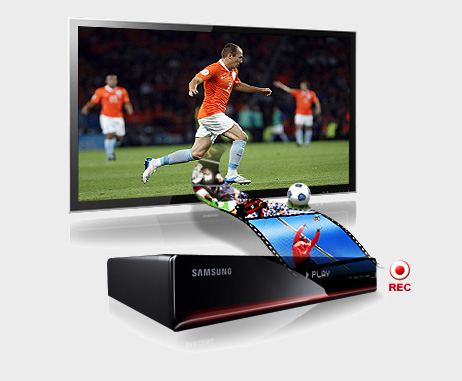Reception of DTV
There are a number of different ways to receive digital television. One of the oldest means of receiving DTV (and TV in general) is using an antenna (known as an aerial in some countries). This way is known as Digital Terrestrial Television (DTT). With DTT, viewers are limited to whatever channels the antenna picks up. Signal quality will also vary.
Other ways have been devised to receive digital television. Among the most familiar to people are digital cable and digital satellite. In some countries where transmissions of TV signals are normally achieved by microwaves, digital MMDS is used. Other standards, such as DMB and DVB-H have been devised to allow handheld devices such as mobile phones to receive TV signals. Another way is IPTV, that is receiving TV via Internet Protocol, relying on DSL or optical cable line. Finally, an alternative way is to receive digital TV signals via the open Internet. For example, there is P2P (peer-to-peer) Internet television software that can be used to watch TV on a computer. Some signals carry encryption and specify use conditions (such as "may not be recorded" or "may not be viewed on displays larger than 1 m in diagonal measure") backed up with the force of law under theWIPO Copyright Treaty and national legislation implementing it, such as the U.S.Digital Millenium Copyright Act. Access to encrypted channels can be controlled by a removable smart card, for example via the Common Interface (DVB-CI) standard for Europe and via Point Of Deployment (POD) for IS or named differently CableCard.Effects of poor reception
Changes in signal reception from factors such as degrading antenna connections or changing weather conditions may gradually reduce the quality of analog TV. The nature of digital TV results in a perfectly-decodable video initially, until the receiving equipment starts picking up interference that overpowers the desired signal or if the signal is too weak to decode. Some equipment will show a garbled picture with significant damage, while other devices may go directly from perfectly-decodable video to no video at all or lock up. This phenomenon is known as the digital cliff effect.
For remote locations, distant channels that, as analog signals, were previously usable in a snowy and degraded state may, as digital signals, be perfectly decodable or may become completely unavailable. In areas where transmitting antennas are located on mountains, viewers who are too close to the transmitter may find reception difficult or impossible because the strongest part of the broadcast signal passes above them. The use of higher frequencies will add to these problems, especially in cases where a clear line-of-sight from the receiving antenna to the transmitter is not available.Multi-path interference is a much more significant problem for DTV than for analog TV and affects reception, particularly when using simple antennas such as rabbit ears.
This is perceived as ghosting with analog broadcasts, but this same problem manifests itself in a different way with DTV. Multi-path can be worse for DTV under high signal conditions. If the problem is severe enough, multi-path can be perceived by the viewer as a spotty loss of audio or picture freezing and pixelation.Dynamic multipath interference, in which the delay and magnitude of reflections are rapidly changing, is particularly problematic for digital reception. While this just produces moving and changing ghost images for analog TV, it can render a digital signal impossible to decode.
The 8VSB-based standards in use in North American ATSC broadcasts are particularly vulnerable to problems from dynamic multipath; this has the potential to severely limit mobile or portable use of digital television receivers.